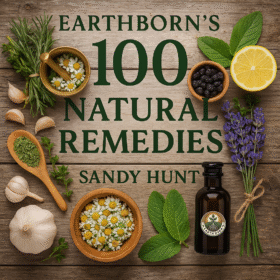-

🎃Pumpkin (Cucurbita pepo)
🌱 Introduction and History The humble pumpkin (Cucurbita pepo and Cucurbita maxima) is an ancient plant first cultivated over 7,500 years ago in North America. Early civilizations like the Aztecs and Native Americans used pumpkins for food, medicine, and even household containers. Today, pumpkins are grown across the globe, from South Africa to Egypt and beyond. This versatile vine offers delicious fruit, ornamental value, and remarkable nutritional benefits. 💊 Medicinal Benefits Pumpkins are a powerhouse of nutrients. The bright orange flesh is rich in beta-carotene (which the body converts into vitamin A), vitamin C, and antioxidants that help strengthen the…
-
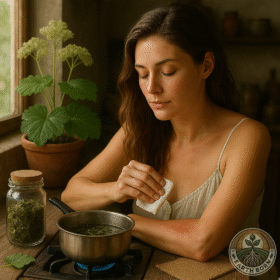
Plume poppy (Macleaya cordata)
🌱 Intro Plume Poppy (Macleaya cordata), also known as Bocconia cordata, is a tall, ornamental perennial native to China and East Asia. With its bold, blue-green leaves and tall plumes of creamy flowers, it has long been admired in traditional gardens. Historically used in Chinese folk medicine, it gained global popularity for its striking look and naturalistic aesthetic in cottage gardens and borders. 💊 Medicinal BenefitsIn Traditional Chinese Medicine (TCM), Plume Poppy has been used for its anti-inflammatory, antimicrobial, and analgesic properties. The plant contains alkaloids such as sanguinarine and chelerythrine, which have shown antibacterial activity and may help in…
-

Carolina Jessamine (Gelsemium sempervirens)
🌱 Intro 🌱 Introduction and History Carolina Jessamine, also known as Yellow Jessamine or Woodbine, is a fast-growing evergreen vine celebrated for its trumpet-shaped golden yellow blooms and sweet fragrance. Native to the southeastern United States, it has long adorned fences, trellises, and wild woodland edges. Traditionally admired for both its beauty and occasional use in folk medicine, this plant is also the state flower of South Carolina. 💊 Medicinal Benefits Historically, extracts from Carolina Jessamine were used by Native American and early herbal practitioners for their sedative, antispasmodic, and fever-reducing effects. Its primary alkaloids—gelsemine and gelseminine—can act on the… Read more…
-
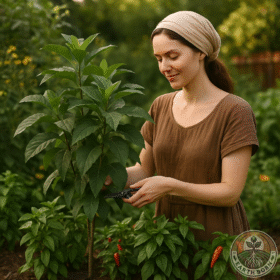
🌱Bitter Leaf (Vernonia amygdalina)
Bitter Leaf (Vernonia amygdalina) is a hardy perennial shrub native to tropical Africa, especially common in Nigeria, Ghana, Cameroon, and Uganda. Known for its characteristically bitter taste, it’s an essential culinary and medicinal plant across West and Central Africa. In traditional homes, the leaves are often washed to reduce bitterness and used in soups and stews. It has been grown and passed down for generations as both food and medicine, earning a revered place in ethnobotany. 💊 Medicinal BenefitsBitter Leaf is a powerhouse of bioactive compounds including vernodalin, vernodalol, and saponins. Traditionally, it has been used to: Help manage blood… Read more…
-
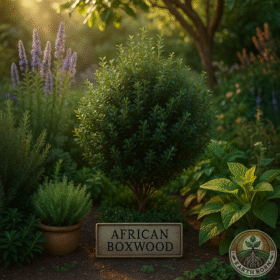
🌱African boxwood (Myrsine africana)
Myrsine africana, known as African boxwood, Cape myrtle, or Boesmanhout, is a hardy evergreen shrub native to South Africa and parts of eastern Africa and Asia. Traditionally used by the Khoisan and various indigenous communities, this member of the Primulaceae family was valued not just for its resilience and compact foliage, but also for its medicinal significance and spiritual uses. Today, it remains popular for its tidy growth habit and suitability as a hedge or ornamental feature. 💊 Medicinal BenefitsAfrican boxwood leaves are rich in flavonoids, tannins, and saponins, granting the plant several therapeutic properties: 🌿 Antioxidant and anti-inflammatory 🌬️…
-
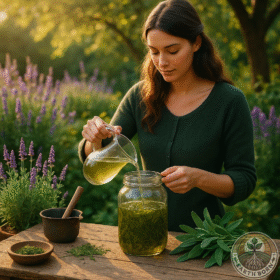
Wormwood (Artemisia absinthium)
🌱 Intro 🌱 Introduction and HistoryWormwood (Artemisia absinthium), often called absinthe wormwood or green ginger, is a silvery perennial herb native to Eurasia. It’s one of the oldest medicinal herbs, dating back to ancient Egypt and Greece, where it was used in religious rituals and healing. During the 19th century, it rose to fame as the key ingredient in the controversial alcoholic drink absinthe. Today, wormwood is cultivated across the globe, including South Africa, valued both for its beauty and its bitter medicinal qualities. 💊 Medicinal BenefitsWormwood contains powerful bioactive compounds like thujone, absinthin, and artemisinin. It has traditionally been…
-
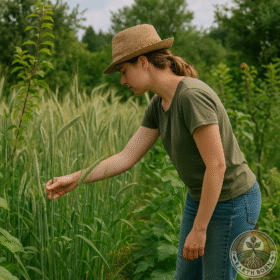
🌱Rye (Secale cereale)
Rye (Secale cereale), also called Cereal Rye, Winter Rye, or Common Rye, is an annual cereal grain from the Poaceae family. Originally domesticated in the Middle East, it became a staple across Eastern Europe and the Nordic countries due to its cold tolerance and soil adaptability. While not native to South Africa, rye grows well in various African regions, including Ethiopia, Kenya, and Tanzania. Its uses span from soil enrichment and livestock fodder to breadmaking and brewing, making it an excellent multipurpose crop. 💊 Medicinal BenefitsTraditionally, rye has been used to support digestive health and improve blood circulation. Its high… Read more…
-
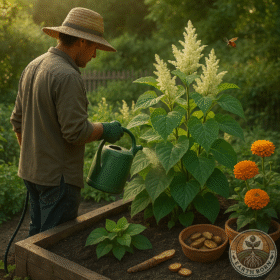
🌱Japanese Knotweed (Fallopia japonica)
Japanese Knotweed (Fallopia japonica), also known as Mexican Bamboo or Japanese Fleeceflower, is a fast-growing, herbaceous perennial native to East Asia. Introduced to Europe and other parts of the world in the 19th century as an ornamental plant and erosion control species, it quickly gained notoriety for its aggressive spread and deep rhizome network. In South Africa, it is relatively rare but should be cultivated with extreme caution due to its highly invasive nature. 💊 Medicinal Benefits Japanese Knotweed is rich in Resveratrol, Emodin, and Quercetin—compounds known for their: 💪 Anti-inflammatory properties ❤️ Cardiovascular support 🧠 Neuroprotective effects 🔬 Antioxidant…
-

🌱Stevia (Stevia rebaudiana)
Stevia (Stevia rebaudiana), native to Paraguay and Brazil, is a small, perennial herb of the sunflower family (Asteraceae). For centuries, indigenous peoples used its sweet leaves to flavor teas and medicines. Today, it’s celebrated globally as a natural, zero-calorie alternative to sugar—up to 300 times sweeter than sucrose, thanks to its unique compounds, stevioside and rebaudioside A. Though not indigenous to South Africa, it is well-suited to our climate and an excellent addition to a health-conscious garden. 💊 Medicinal BenefitsStevia is best known for its use as a natural sweetener, but its benefits extend further. It may help regulate blood… Read more…
-
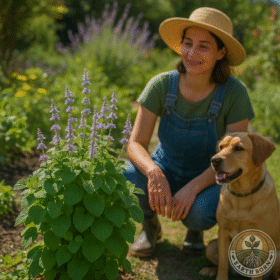
🌱Sore-eye bush (Platostoma rotundifolium)
Platostoma rotundifolium, more affectionately known as Sore-eye bush, is a perennial herb native to Southern Africa, especially well-rooted in South African traditional gardens and medicine. A member of the mint family (Lamiaceae), this resilient herb has long played a role in rural communities for its healing properties, particularly for eye-related ailments. Its dense, rounded foliage and aromatic nature make it a charming and purposeful plant for home gardens. 💊 Medicinal Benefits The Sore-eye bush is treasured for its antimicrobial and anti-inflammatory properties. Its leaves are rich in terpenoids and phenolic compounds, which help reduce eye irritation and fight infections. Traditionally,… Read more…


 **Meet Sprout!** Sprout is your friendly gardening companion at Earthborn, always ready with helpful advice on plant care, medicinal herbs, and natural gardening solutions. From seedling to harvest, Sprout provides expert guidance to nurture your garden and your well-being—making gardening easy, fun, and naturally rewarding.
**Meet Sprout!** Sprout is your friendly gardening companion at Earthborn, always ready with helpful advice on plant care, medicinal herbs, and natural gardening solutions. From seedling to harvest, Sprout provides expert guidance to nurture your garden and your well-being—making gardening easy, fun, and naturally rewarding.
